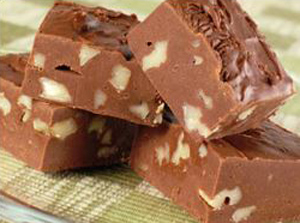1950s Holiday Recipes
Christmas Pudding
It's a long-standing tradition to add silver Christmas coins, charms or tokens to Christmas pudding. Why do people do this?
Well, whoever finds a Christmas coin in their slice of Christmas pudding is said to have good luck and wealth in the following year - and that can't be a bad thing.
However, only silver Christmas coins should be used rather than modern base metal currency. Also, you should never serve plum pudding with coins in it to small children or without alerting your guests to their presence.
Putting coins in your plum pudding is a really lovely way to add some fun and special memories to your Christmas day. If you exchange the silver coins for real money you'll get them back to use them for years to come, making a perfect family heirloom.
Easy Christmas Pudding
Ingredients
3 cups plain (all purpose) flour
2 teaspoons bicarbonate soda
2 teaspoon ground cloves
1½ cups dried mixed fruit
½ teaspoon salt
1 tablespoon butter, melted
2 teaspoons of your favorite holiday spice mix, or pumpkin pie mix
1 heaped cup sugar
2 cups cold tea (strained or from tea bags)
Directions
Mix all dry ingredients with two cups of cold tea and the melted butter.
For good luck and in keeping with an old Christmas tradition you can ask family members to each stir the pudding mixture and make a wish.
Once the ingredients are well mixed, pour them into a greased steamed pudding tin with a lid. Alternatively, use calico fabric and tie it with string and place the calico bag into a large heat-resistant bowl and cover with foil. The mixture can also be cooked as two smaller puddings if preferred.
Fill a large saucepan halfway with water. Place the pudding into the saucepan and put the saucepan onto the stovetop. Bring the water to the boil and then reduce it to a simmer to steam the Christmas pudding for 1½ hours.
Once the time is up, test the pudding with a metal skewer - if it comes out without pudding stuck to it, it’s ready to eat.
Serve your Christmas pudding:
We recommend you press your Christmas coins into the pudding at this point or after slicing up the pudding. Aside from avoiding scorching the silver during cooking, this method is best if you have young children as guests: for safety, their slices should not contain coins.
Serve slices of delicious hot pudding in bowls or on small plates. The Christmas pudding is best topped with dollops of brandy custard or brandy butter.
Serves 10-12 people. If there's any left it should keep in the fridge for around five days.





















